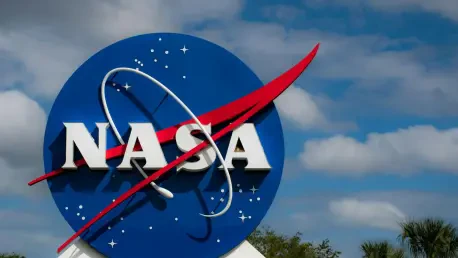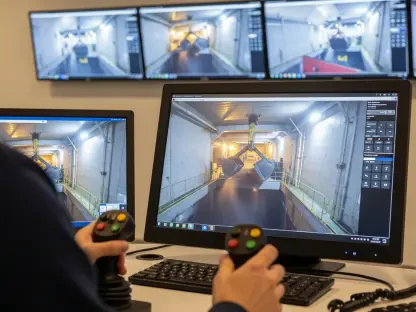In the ever-evolving landscape of global competition, the race for dominance in space has taken center stage, with the United States striving to stay ahead of formidable adversaries like China. A pioneering partnership between Anduril Industries, a trailblazer in defense technology, and Impulse Space, a cutting-edge propulsion startup, is poised to transform the dynamics of space operations. Their collaborative effort centers on a revolutionary satellite system capable of reaching geostationary orbit (GEO)—a critical zone 36,000 miles above Earth—in under 24 hours. This dramatic reduction from the traditional months-long timelines could redefine strategic and commercial missions alike. As GEO houses vital communication and defense satellites, the ability to access it swiftly offers an unparalleled advantage. This initiative not only underscores the escalating role of private enterprises in space innovation but also highlights the pressing need to counter rapid advancements by competitors. The stakes couldn’t be higher as this project aims to secure a leading position for the U.S. in the final frontier.
The Technological Edge of Helios
Revolutionizing Speed and Precision
The Helios system, at the heart of the Anduril-Impulse collaboration, represents a seismic shift in how satellites are deployed to geostationary orbit. Designed to complete this journey in less than a day, it shatters the conventional timelines that often stretch over several months. Impulse Space brings to the table its innovative Mira spacecraft, paired with the powerful Deneb engine and a specialized Helios kick stage. These components work in tandem to ensure rapid orbital transfers, providing a level of agility previously unimaginable. This speed is not merely a technical achievement; it holds the potential to transform military operations by enabling quick deployment of critical assets. For commercial entities, it means faster delivery of services like broadband connectivity. The promise of such efficiency positions the Helios system as a game-changer, redefining the benchmarks for space access and operational readiness in a highly competitive arena.
Beyond the focus on speed, the Helios system integrates a suite of advanced technologies that enhance its operational capabilities. Anduril Industries contributes significantly with mission-specific payloads that complement Impulse Space’s propulsion expertise. These payloads are engineered to handle the complexities of high-altitude missions, ensuring that satellites can be positioned with pinpoint accuracy. The system’s design prioritizes not just rapid deployment but also reliability, addressing the unique challenges of GEO, where conditions demand robust solutions. This technological synergy between the two companies creates a platform that can adapt to a variety of mission profiles, whether for defense purposes or civilian applications. By pushing the boundaries of what’s possible in satellite deployment, this partnership sets a new standard for innovation, demonstrating how targeted engineering can solve longstanding bottlenecks in space operations and elevate the U.S. position on the global stage.
Advanced Payloads for Complex Missions
A key strength of the Helios system lies in its sophisticated payloads, which are tailored to meet the demands of intricate orbital maneuvers. Among these is a long-wave infrared (LWIR) imager, a cutting-edge tool provided by Anduril that excels at detecting faint targets even in low-light conditions. This capability is crucial for missions requiring high precision, such as identifying and tracking objects in the vastness of space. The LWIR imager ensures that potential threats or assets can be monitored effectively, enhancing situational awareness at great distances. Such technology is particularly vital in GEO, where critical satellites must be safeguarded against interference or hostile actions. By incorporating this advanced imaging system, the Helios project addresses a critical need for enhanced visibility, offering a strategic edge in both military and surveillance contexts.
Complementing the imaging technology is Anduril’s Lattice software, a powerful tool for autonomous satellite tracking and rendezvous operations. This software enables the Helios system to perform proximity maneuvers with exceptional safety and accuracy, a necessity for complex tasks like satellite servicing or repositioning. The ability to autonomously navigate and interact with other objects in orbit reduces human error and operational risks, ensuring missions are executed seamlessly. Lattice software also supports real-time decision-making, allowing the system to adapt to dynamic conditions in space. This level of autonomy is a significant leap forward, as it equips the U.S. with the means to maintain control over high-value assets while responding swiftly to emerging challenges. Together, these technological advancements underscore the Helios system’s potential to redefine precision in space operations, marking a pivotal step in strengthening national capabilities.
Strategic Imperatives in the Space Race
Countering Global Competitors
The urgency behind the development of the Helios system is deeply rooted in the intensifying global competition for space supremacy, particularly with China’s notable progress in satellite maneuver technology. Over recent years, China has demonstrated advanced capabilities in close-approach operations, raising concerns about the security of U.S. assets in orbit. The ability to reposition spacecraft quickly and effectively has become a critical factor in maintaining a strategic advantage. The Helios system directly addresses this challenge by prioritizing speed and agility, ensuring that the U.S. can counter potential threats with unprecedented responsiveness. This initiative is not merely a technological endeavor but a strategic necessity, aimed at protecting national interests in an increasingly contested domain. By focusing on rapid deployment, the project seeks to mitigate risks posed by adversaries, reinforcing the importance of staying ahead in this high-stakes race.
Another dimension of this competitive landscape is the broader geopolitical context in which space has become a theater for demonstrating power and influence. The Helios system serves as a tangible response to the need for the U.S. to assert dominance in orbital operations, particularly in light of China’s growing presence. Beyond mere defense, the ability to access GEO swiftly enhances the nation’s capacity to project strength and deter potential aggressions. This strategic focus aligns with broader military objectives to secure freedom of maneuver in space, a concept that emphasizes the importance of operational flexibility. The collaboration between Anduril and Impulse Space reflects a proactive approach to these challenges, leveraging private sector innovation to address public sector priorities. As global tensions continue to play out in space, initiatives like Helios are pivotal in ensuring that the U.S. maintains its leadership and safeguards its critical infrastructure against evolving threats.
Securing Critical Orbital Zones
Geostationary orbit holds immense strategic value due to its role as the primary location for many military and communication satellites, making it a focal point for national security. Positioned at approximately 36,000 miles above Earth, GEO offers a unique vantage point for continuous coverage over specific regions, which is indispensable for defense and global connectivity. The Helios system’s ability to reach this orbit in under 24 hours provides a significant tactical advantage, allowing for rapid reinforcement or replacement of critical assets. Protecting these satellites from interference or attack is paramount, as disruptions could have far-reaching consequences for both military operations and civilian services. By prioritizing swift access to GEO, the Helios project addresses a longstanding vulnerability, ensuring that the U.S. can maintain control over this vital orbital zone in the face of growing competition.
Further emphasizing the importance of GEO, upcoming missions such as Victus Surgo, scheduled for late 2026 aboard a SpaceX Falcon 9 rocket, will serve as critical tests for the Helios system’s capabilities. Conducted in collaboration with the U.S. Space Force, these missions aim to validate the system’s performance under real-world conditions, focusing on rapid deployment and operational precision. The outcomes of such tests will provide valuable insights into how effectively the U.S. can secure and utilize GEO for defense purposes. This partnership with the Space Force highlights the alignment between private innovation and governmental priorities, showcasing a unified effort to bolster national security. As these missions unfold, they will likely shape future strategies for orbital defense, underscoring the Helios system’s role as a cornerstone in maintaining U.S. dominance in strategically significant regions of space.
Economic and Commercial Opportunities
Balancing Defense and Civilian Goals
While the Helios system is fundamentally driven by defense imperatives, its potential for commercial applications adds another layer of significance to the project. Impulse Space has actively pursued partnerships with private entities such as Astranis, focusing on broadband satellite delivery, and Infinite Orbits, which specializes in multi-satellite servicing missions. These collaborations highlight the versatility of the technology, demonstrating its capacity to meet diverse needs beyond military objectives. The ability to deploy satellites rapidly in GEO can accelerate the rollout of global internet services, addressing connectivity gaps in underserved regions. Such civilian applications not only expand the system’s market reach but also contribute to economic growth by fostering innovation in the space industry. This dual-purpose approach ensures that the benefits of Helios extend to a broader audience, balancing strategic goals with tangible societal impact.
The commercial dimension of the Helios system also reflects a growing trend of integrating defense and civilian objectives within space technology initiatives. By catering to both sectors, the project maximizes its utility and economic potential, creating a sustainable model for future developments. The partnerships forged by Impulse Space illustrate how private companies can drive progress in areas traditionally dominated by government entities, offering cost-effective solutions that benefit a wide range of stakeholders. Moreover, the commercial success of such technologies can fuel further investment in research and development, ensuring continuous improvement and adaptation to emerging needs. As the space industry evolves, initiatives like Helios pave the way for a more interconnected and accessible orbital economy, demonstrating how strategic innovations can yield dividends far beyond their initial scope and purpose.
Public-Private Synergy Driving Progress
The collaboration between Anduril Industries and Impulse Space exemplifies the power of public-private partnerships in advancing space capabilities, a trend that has become increasingly vital for maintaining national competitiveness. Impulse Space has already secured substantial contracts from the U.S. Space Force and the Defense Innovation Unit, including a multi-million-dollar agreement to support defense missions. These partnerships underscore the trust placed in private companies to deliver military-grade solutions efficiently and at a lower cost than traditional government programs. Such arrangements enable the rapid development and deployment of cutting-edge technologies like Helios, ensuring that the U.S. remains at the forefront of space innovation. This synergy not only accelerates progress but also optimizes resource allocation, allowing public funds to be used more effectively while leveraging private sector expertise.
Additionally, the economic implications of these collaborations extend beyond immediate project outcomes, fostering a broader ecosystem of innovation and job creation within the space sector. By aligning private ingenuity with public goals, the Helios initiative contributes to a robust framework for addressing both current and future challenges in space operations. The involvement of entities like the Space Force ensures that strategic priorities are met, while private investment drives technological breakthroughs that can be commercialized for wider use. This model of cooperation sets a precedent for how complex global challenges can be tackled through shared efforts, enhancing the U.S. position in both economic and strategic terms. As this trend continues, it is likely to shape the trajectory of space exploration and utilization, ensuring that advancements like the Helios system have a lasting impact on national and international landscapes.









